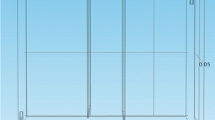Abstract
Conductivity is a typical physico-chemical property that has a substantial effect on electrical energy consumption in the electrorefining process. The objective of this study was to examine the validity of regression models predicting the conductivity of industrial copper electrorefining electrolytes. The models were based on data measured with synthetic solutions on a laboratory scale. The variables included in the models were temperature and the concentrations of copper, nickel, arsenic and sulfuric acid. Both first-order and combined effects of the variables were investigated. The measured data were analyzed using MODDE 8.0 modeling and design software. The validity of the models was investigated by comparing the predicted values with tankhouse conductivity measurements taken at the Boliden Harjavalta Copper Refinery in Pori in Finland. During the tankhouse tests, the conductivity and temperature of the industrial electrolyte were measured, and the composition of the electrolyte was analyzed. The measured conductivity values were compared with the predicted conductivities calculated using the developed models. The conductivity model developed in this paper was shown to be more accurate than previous models and suitable for industrial use.
Similar content being viewed by others
References
Bartolucci, A., Singh, K.P., and Bae, S., 2015, Introduction to Statistical Analysis of Laboratory Data, John Wiley & Sons., 281 pp, https://doi.org/10.1002/9781118736890.
Davenport, W.G., King, M., Schlesinger, M., and Biswas, A.K., 2002a, “Overview,” Extractive Metallurgy of Copper, 4th Edition, Elsevier Science Ltd.
Davenport, W.G., King, M., Schlesinger, M., Biswas, A.K., and Robinson, T., 2002b, “Electrolytic Refining,” Extractive Metallurgy of Copper, 4th Edition, Elsevier Science Ltd.
Dean, R.B., and Dixon, W.J., 1951, “Simplified statistics for small numbers of observations,” Analytical Chemistry, Vol. 23, pp. 636–638, https://doi.org/10.1021/ac60052a025.
Devochkin, A.I., Kuzmina, I.S., Salimzhanova, E.V., and Petukhova, L.I., 2015, “The study of sulfate copper electrolyte physicochemical properties depending on its components and temperature,” Tsvetnye Metally, Issue 6, pp. 67–71, https://doi.org/10.17580/tsm.2015.06.13.
Eriksson, L., Johansson, E., Kettaneh-Wold, N., Wikström, C., and Wold, S., 2008, Design of Experiments, Principles and Applications, MKS Umetrics AB., 459 pp.
Hiskey, J.B., and Maeda, Y., 2003, “A study of copper deposition in the presence of Group-15 elements by cyclic voltammetry and Auger-electron spectroscopy,” Journal of Applied Electrochemistry, Vol. 33, pp. 393–401.
Kalliomäki, T., Aromaa, J., and Lundström, M., 2016a, “Conductivity Model for Copper Electrorefining Electrolyte,” Copper 2016 conference, The Mining and Materials Processing Institute of Japan, 2016, Kobe.
Kalliomäki, T., Aromaa, J., and Lundström, M., 2016b, “Modeling the effect of composition and temperature on the conductivity of synthetic copper electrorefining electrolyte,” Minerals, Vol. 6, Issue 3, https://doi.org/10.3390/min6030059.
Kern, E.F., and Chang, M.Y., 1922, “Conductivity of copper refining electrolytes,” Proceedings of the 41st General Meeting of the American Electrochemical Society, American Electrochemical Society, April 28, 1922, Baltimore, MD.
Moats, M.S., Hiskey, J.B., and Collins, D.W., 2000, “The effect of copper, acid, and temperature on the diffusion coefficient of cupric ions in simulated electrorefining electrolytes,” Hydrometallurgy, Vol. 56, pp. 255–268.
Moats, M., Davenport, W., Demetrio, S., Robinson, T., and Karcas G., 2007, “Electrolytic copper refining — 2007 World tankhouse operating data,” Copper Electrorefining and Electrowinning Copper 2007 — Cobre 2007 Conference, G.E. Houlachi, J.D. Edwards and T.G. Robinson, eds., 2007, Canadian Institute of Mining, Metallurgy and Petroleum.
Price, D.C., and Davenport, W.G., 1980, “Densities, electrical conductivities and viscosities of CuSO4/H2SO4 solutions in the range of modern electrorefining and electrowinning electrolytes,” Metallurgical Transactions B, Vol. 11B, pp. 159–163, https://doi.org/10.1007/bf02657185.
Price, D.C., and Davenport, W.G., 1981, “Physico-chemical properties of copper electrorefining and electrowinning electrolytes,” Metallurgical Transactions B, Vol. 12B, pp. 639–643, https://doi.org/10.1007/bf02654131.
Schlesinger, M.E., King, M.J., Sole, K.C., and Davenport, W.G., 2011, “Electrolyte,” Extractive Metallurgy of Copper, 5th Edition, Elsevier Science Ltd.
Skowronski, S., and Reinoso, E.A., 1927, “The specific resistivity of copper refining electrolytes and method of calculation,” Proceedings of the 51st General Meeting of the American Electrochemical Society, American Electrochemical Society, April 30, 1927, Philadelphia, PA.
Subbaiah, T., and Das, S.C., 1989, “Physico-chemical properties of copper electrolytes,” Metallurgical Transactions B, Vol. 20B, pp. 375–380, https://doi.org/10.1007/bf02696989.
Author information
Authors and Affiliations
Corresponding author
Additional information
Paper number MMP-17-050.
Discussion of this peer-reviewed and approved paper is invited and must be submitted to SME Publications Dept. prior to Feb. 28, 2019.
Rights and permissions
About this article
Cite this article
Lehtiniemi, I., Kalliomäki, T., Rintala, L. et al. Validation of electrolyte conductivity models in industrial copper electrorefining. Mining, Metallurgy & Exploration 35, 117–124 (2018). https://doi.org/10.19150/mmp.8460
Received:
Accepted:
Published:
Issue Date:
DOI: https://doi.org/10.19150/mmp.8460




